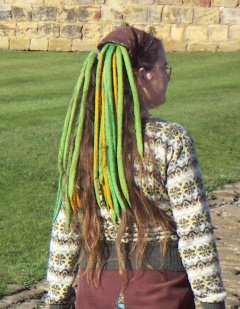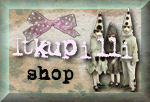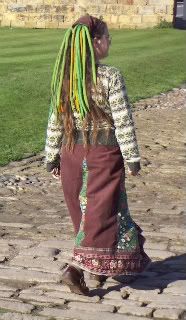
I do a lot of dyeing when producing clothing for my store, most commonly using the low water immersion technique on organic bamboo velour, a delightfully strokable fabric. But there are many different ways to apply Procion MX and today I thought I'd show you how to dye in a polythene bag. The measurements given are based on those by Ruth Issett in her book 'Colour on Cloth', though I tend to be flexible in how I stick to these. This recipe makes approx 6 bags of fabric.
Firstly, make up your chemical bases and label and store in airtight containers:
Chemical water:
140g urea
1 tsp Calgon
1 litre warm water
Soda ash solution:
20g soda ash
1 litre very hot water
Select your dyes. If dyeing is new to you, try starting with the 6 basics: lemon, golden yellow, scarlet, magenta, turquoise and ultramarine. For each colour mix a teaspoon with 25mls of warm water, not too hot, stirring well to dissolve all lumps. Add 100mls of chemical water to each pot.
Select your pre-washed fabrics. If you want to experiment on different types of natural fabrics then cut 5-6 squares of fabric per bag, approx 15 by 30 cms each. If you want to dye larger amounts then increase the proportions of mixtures added to suit. I wanted to dye some craft muslin/scrim for a project so chose to cut narrow lengths of this instead.

Add 25mls of dye solution to a bag and squeeze the bag to ensure that the dye reaches all areas of the fabric. Add more dye mix if needed. This can be a different colour if preferred, which can give interesting results if carefully handled, but do be aware that if you use a mix of 3 primary colours it may turn muddy brown if mixed too vigorously. Tie the bag and leave for 10 mins. Repeat for all 6 bags. I made my 3 bags with orange, golden yellow, green and brown dyes, which I used in combination.
After 10 mins add 25 mls of soda solution (more if more dye mixture was added) and squeeze to ensure absorption.

Tie up the bags and leave overnight. Next days, rinse in cold water then wash with a cleaning solution such as Synthrapol or Colsperse. Rinse until clear. I do all this in a washing machine but I'm lazy and often have large amount of fabrics to finish :) For craft purposes. soaking and rinsing by hand may give a deeper colour.

Check back over the coming weeks to see what I did with my dyed scrim ;)




























